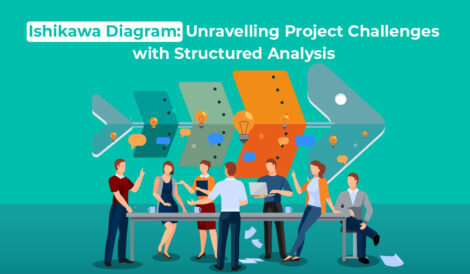India has achieved a significant milestone in space exploration by successfully conducting its first in-orbit satellite docking mission. The Indian Space Research Organisation (ISRO) executed the Space Docking Experiment (SpaDeX) on January 16, 2025, marking India as the fourth nation to demonstrate this capability, following the United States, Russia, and China. Behind this groundbreaking achievement lies a story of challenges, innovative solutions, and valuable lessons for project management professionals.
Key Facts About SpaDeX
- Mission Date: The Space Docking Experiment was launched on December 30, 2024, and docking was successfully achieved in January 2025.
- Satellites Used: Two ISRO satellites, named “Target” and “Chaser,” executed complex orbital maneuvers to demonstrate docking and undocking.
- Significance: SpaDeX paves the way for future satellite servicing, space station operations, and interplanetary missions.
- Additional Payload: The mission carried cowpea seeds to study germination in microgravity, contributing to advancements in long-duration space missions.
Reference: Read more about ISRO’s SpaDeX mission
Challenges Faced by ISRO During SpaDeX
1. Complex Orbital Maneuvers
- Challenge: Precise synchronization of satellites in orbit required exceptional accuracy in trajectory planning and real-time adjustments.
- Solution: ISRO employed advanced navigation systems and real-time telemetry analysis to mitigate deviations.
2. Docking Technology Development
- Challenge: Designing robust docking mechanisms capable of operating reliably in space.
- Solution: ISRO utilized modular engineering designs and innovative materials to ensure repeatable and durable docking processes.
3. Communication Latency
- Challenge: Time delays in space communications posed risks to real-time coordination.
- Solution: Autonomous control systems allowed satellites to execute pre-programmed maneuvers without ground-based intervention.
4. Budget and Resource Constraints
- Challenge: Operating within a limited budget while maintaining high-quality standards.
- Solution: ISRO’s legacy of frugality and strategic resource allocation ensured cost-effective execution.
5. Microgravity Payload Management
- Challenge: Ensuring the survival and growth of biological payloads (cowpea seeds) in a microgravity environment.
- Solution: Precise environmental control systems were developed to maintain optimal conditions.
Lessons for Project Management Professionals
The SpaDeX mission offers rich insights for project managers navigating complex and resource-constrained environments:
1. Precision in Planning and Execution
- Lesson: Meticulous planning is crucial for complex projects. ISRO’s detailed trajectory models and contingency strategies highlight the importance of robust risk management.
- Takeaway: Break down project tasks into clear milestones with contingency plans to anticipate risks.
2. Embracing Innovation Under Constraints
- Lesson: ISRO’s ability to achieve results within budget constraints demonstrates the value of innovation and resourcefulness.
- Takeaway: Foster a culture of creative problem-solving and prioritize critical deliverables to maximize resources.
3. Leveraging Automation and Technology
- Lesson: Autonomous systems in SpaDeX underline the importance of automation in managing complexity and reducing manual errors.
- Takeaway: Identify repetitive processes in your projects and automate them to enhance efficiency.
4. Effective Team Collaboration
- Lesson: Coordinating multiple teams for docking technology, payload integration, and mission operations required seamless collaboration.
- Takeaway: Foster interdepartmental communication and ensure alignment across all project components.
5. Continuous Testing and Iteration
- Lesson: Rigorous testing of docking mechanisms and payload systems ensured reliability in space.
- Takeaway: Implement iterative testing cycles to identify and address issues early.
6. Balancing Ambition with Realism
- Lesson: ISRO set ambitious goals but remained realistic in its execution strategy, focusing on core objectives.
- Takeaway: Balance innovation with practicality by setting achievable targets and maintaining focus.
What Project Managers Can Learn
- Adaptability: Embrace challenges as opportunities for innovation, much like ISRO’s handling of constraints in the SpaDeX mission.
- Strategic Thinking: Align every project component with overarching goals, ensuring cohesive execution.
- Efficiency: Optimize resource use to achieve high-impact results without compromising quality.
- Future Planning: The SpaDeX mission’s success is a step towards larger goals like satellite servicing and space stations. Similarly, project managers must align current initiatives with long-term organizational objectives.
Conclusion
The SpaDeX mission is not just a testament to ISRO’s technological prowess but also a masterclass in overcoming challenges through strategic planning, collaboration, and innovation. For project management professionals, this mission highlights the importance of precision, adaptability, and efficient resource utilization.
What’s Your Takeaway?
Reflect on how these lessons from SpaDeX can be applied to your projects. For more insights on space exploration and project management strategies, explore : ISRO’s SpaDeX Mission Overview
Let’s draw inspiration from ISRO’s triumph to redefine success in project management!








